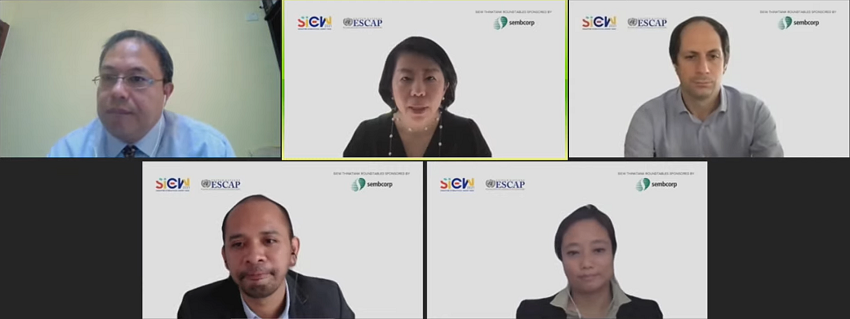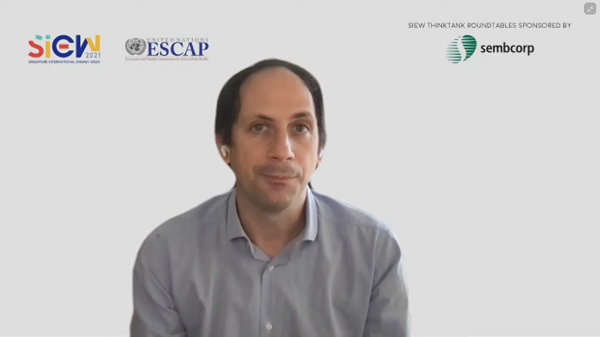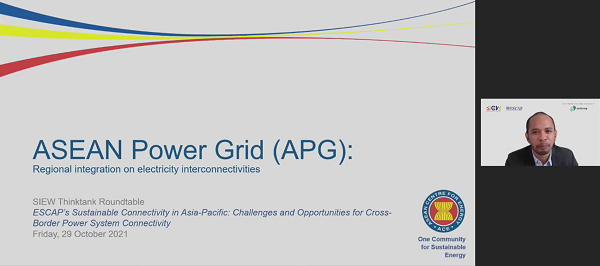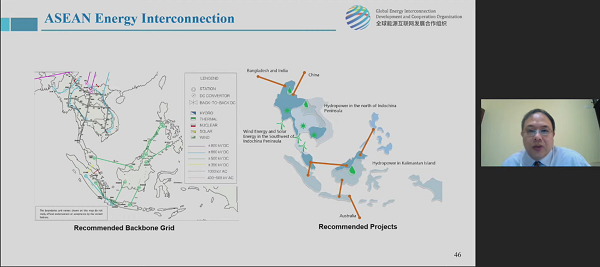SIEW Thinktank Roundtable K gathered diverse views on the challenges and opportunities in cross-border power system connectivity. Tan Kheng Hiang reports

Power systems are facing structural changes, as the need arises to meet sustainable development and national policy goals. Participants at SIEW Thinktank Roundtable K recognised that ASEAN economies still have some way to go in implementing sustainable energy connectivity in the region.
Organised by the United Nations Economic and Social Commission for Asia and the Pacific (UNESCAP), the roundtable session focused on the challenges and opportunities of increased cross-border power system integration.

Matthew Wittenstein, Section Chief, Energy Connectivity at UNESCAP, shared that compared to Europe and Africa, the progress of cross-border power system integration is more limited in Asia as it comprises mainly bilateral interconnection. He highlighted how UNESCAP is thus working with the region to support more sustainable connectivity through a regional roadmap for power connectivity in Asia.
UNESCAP has proposed a roadmap that comprises principles and nine strategies in the areas of planning, financing and development of cross-border infrastructure, operation of transmission infrastructure safely and efficiently, cross-cutting initiatives to build trust and political consensus, and capacity building.

ASEAN Centre for Energy (ACE) Manager, Beni Suryadi, shared more on the current progress of the ASEAN Power Grid (APG) initiative. He noted that existing regional interconnections have a capacity of 7,720 megawatts (MW) and is projected to increase through collaborations like the Laos PDR–Thailand–Malaysia–Singapore Power Integration Project (LTMS – PIP).
He added that ASEAN is looking to support multilateral power trade and integrate more renewables into the APG with the ASEAN Interconnection Masterplan Study (AIMS) III.
Financing cross-border infrastructure
Expert participants next shared their perspectives on the opportunities and challenges in the financing of cross-border infrastructure.
Frederic Asseline, Head of Program Team, Multilateral Cooperation Centre for Development Finance (MCDF), shared how its initiatives are designed to provide grant financing to foster high-quality infrastructure and connectivity investments in developing countries. MCDF benefits countries by bringing cross-border investment in association with new partners, who can help co-finance these projects with large multilateral development banks.
Aligning energy connectivity with sustainability goals
The panel of speakers then discussed some of the key developments in energy connectivity reshaping power systems across the region.
Jagjeet Sareen, Assistant Director-General, Strategy, International Solar Alliance Secretariat, discussed its vision of “One Sun, One World, One Grid”, which is to connect the demand loads with solar generation sources. This joint initiative, comprising more than 80 countries, to set to accelerate interconnector infrastructure development across borders.
Sembcorp Industries see a huge potential in the burgeoning renewables sector, as part of the region's larger push for power system sustainability. Valerie Lee, Head, Corporate Development (Singapore and Southeast Asia) at Sembcorp Industries Ltd, shared the company’s ambitious targets to quadruple its installed renewable energy capacity by 2025.

Dr Huang Han, Deputy Director-General, GEI Research Institute, GEIDCO, shared that by 2050, the HVAC/DC backbone in Asia will be formed with interconnections to neighbouring regions to achieve a cleaner energy system. Based on this plan, Asia’s regional power exchange can reach 10% of total power generation capacity in 2050. Power exchange between Asia and China, South Asia and Australia could reach 26 GW, 11 GW and 8 GW respectively, making Asia a regional power exchange hub.
The panel of speakers concluded that political will and setting clear targets is key to enabling cross-border energy connectivity in the region to materialise. This will help countries accelerate progress towards achieving their sustainability goals.
Follow us on Twitter (@SIEW_sg) to get the latest #SIEW2021 updates throughout the day!